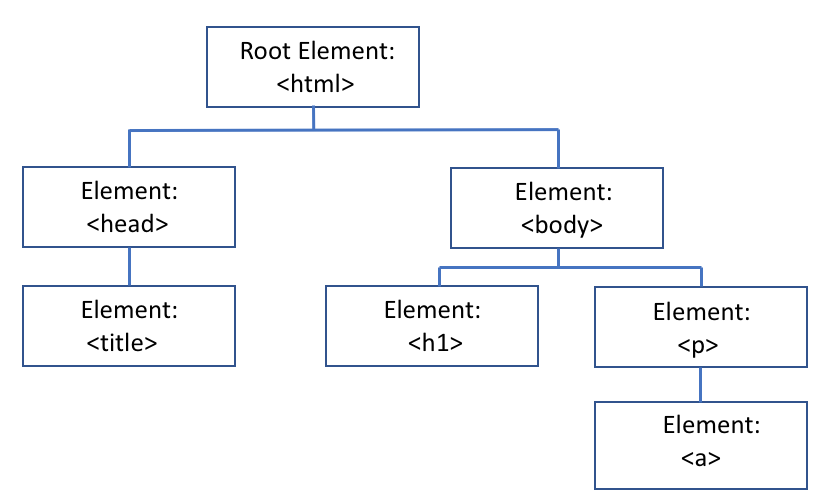13.7. Group Work: HTML Basics¶
It is best to use a POGIL approach with the following. In POGIL students work in groups on activities and each member has an assigned role. For more information see https://cspogil.org/Home.
Note
If you work in a group, have only one member of the group fill in the answers on this page. You will be able to share your answers with the group at the bottom of the page.
Learning Objectives
Students will know and be able to do the following.
Content Objectives:
What is HTML?
What is a tag?
What are common HTML tags?
What is the structure of an HTML page?
Process Objectives:
Identify start and end tags
Fix incorrect HTML
Put HTML tags in order
Describe relationships between tags (parent, child, sibling)
HTML stands for Hyper Text Markup Language. It is used to create web pages. HTML describes the elements of the webpage such as the title, paragraphs, images, and links. For more information on HTML see the tutorial at https://www.w3schools.com/html/.
HTML uses tags to describe the elements of the document. Tags are enclosed in “<” and “>”.
Note
HTML is not a programming language. It is a markup language for describing documents.
Click on the “Render” button to see the resulting web page.
Try adding a h2 and h3 header to the HTML above after the paragraph.
Q-2: What happens to the text as the header level increases (h1, h2, h3)?
The first tag, <!DOCTYPE html>, indicates that this is an HTML document.
While it is best to include this tag, the page will typically display
fine even if you don’t include it.
The html tag is the root (start) tag for the document.
The head tag contains meta information about the document such as the title.
The body tag contains the items that will be displayed.
The h1 tag is for a first-level (most important) header. There are additional types of headers: h2, h3, etc.
The p tag indicates a paragraph of text.
-
Q-3: Match each tag to its definition.
Read the information above and try again.
- html
- The root (start) tag for a HTML document.
- head
- Contains meta data about the document. This information will not be displayed.
- body
- Contains all the information that will be displayed in the web page.
- title
- The title for this web page.
- h2
- A second-level header.
- p
- A paragraph.
13.7.3. Tag Relationships: Parent, Child, Sibling¶
The HTML tag has
two children tags: <head> and <body>. The head contains meta information
about the page including the page title. The body contains the elements
that are displayed in the page such as the headers and paragraphs.
Put the blocks into order to define a simple HTML page. Indent the blocks to show the structure.
Put the blocks into order to define a simple HTML page with a header and a paragraph in that order. Indent the blocks to show the structure.
In an HTML page the root element is the “html” tag. A root is the start of a structure. This type of structure
is called a tree. The html tag has two children
elements: the head and body tags. These tags are called sibling tags since they share the same parent tag.
The parent for the head and body tags is
the html tag. The body tag is the parent of the h1 and p tags.

h1
-
No, the parent is connected in the tree structure.
p
-
Yes, the parent is the paragraph (p) tag.
body
-
No, the body is the parent of the p tag.
html
-
No, the html tag is the parent of the body tag
Q-11: Which tag is the parent of the a (hyperlink) tag in the above structure?
h1
-
No, the title is not connected to the h1 tag.
body
-
No, the title is not connected to the body tag.
head
-
Yes, the parent tag is the head tag.
html
-
No, the html tag is the parent of the head tag.
Q-12: Which tag is the parent of the title tag in the above structure?
If you worked in a group, you can copy the answers from this page to the other group members. Select the group members below and click the button to share the answers.
The Submit Group button will submit the answer for each each question on this page for each member of your group. It also logs you as the official group submitter.